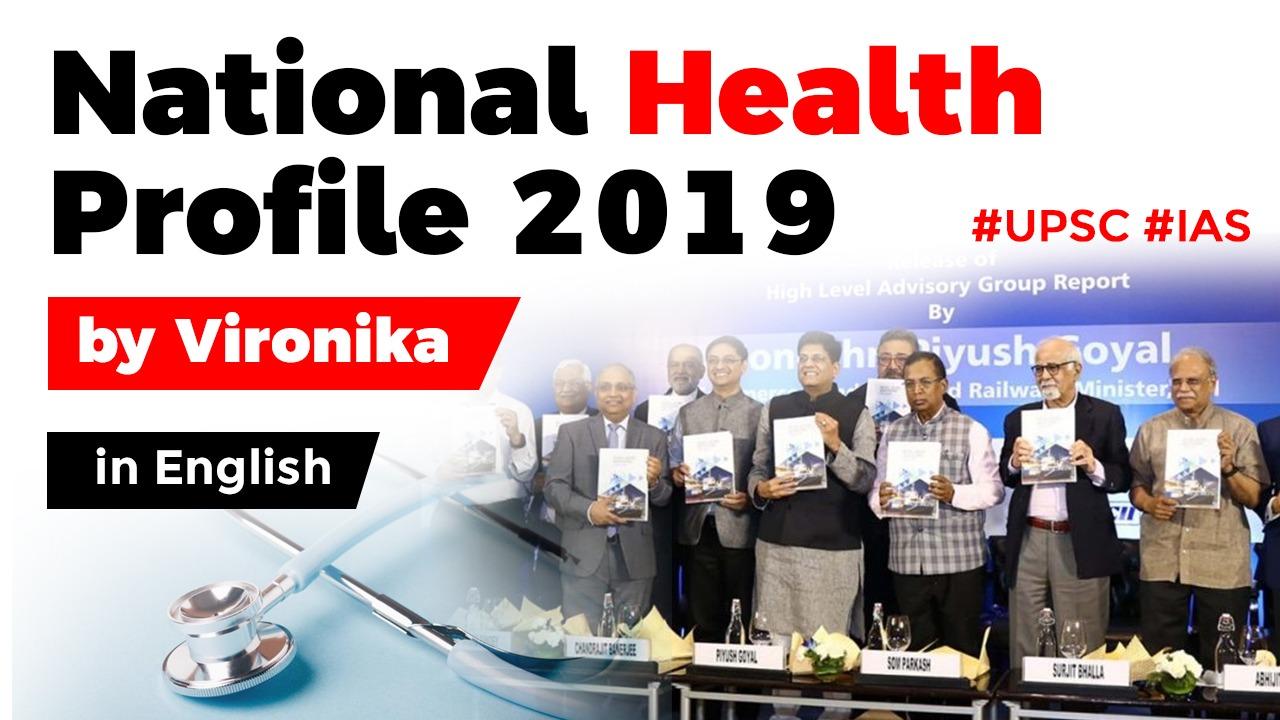Table of Contents
Context
- Union Health Minister has released the 14th edition of the National Health Profile 2019.
National Health Profile
- Annual stocktaking exercise on the health of the health sector.
- Comprehensive framework on the socio-economic health status and the status of demographic and health resources in the country.
- Prepared by the Central Bureau of Health Intelligence (CBHI).
Highlights
- Per capita health expenditure
- In 2016, India’s Domestic general government health expenditure stood at $16 per capita.
- Disease profile
- The NHP also notes the change in disease profile of the country with a shift towards the non-communicable disease from communicable ones.
- Life expectancy
- Life expectancy in India has increased from 49.7 years in 1970-75 to 68.7 years in 2012-16.
- Economically active population
- On demographics, the survey found the high incidence of the young and economically active population.
- Birth/Death rates
- There has been a consistent decrease in the birth rate, death rate and natural growth rate in India since 1991 to 2017.
- Sex Ratio
- As per the NHP, sex ratio (number of females per 1,000 males) in the country has improved from 933 in 2001 to 943 in 2011.
- Dip in IMR
- Causes of death
- During the year 2015, 4.13 lakh people lost their life due to accidental injuries and 1.33 lakh people died because of suicide.
- Pollution related illness
- Air pollution-linked acute respiratory infections contributed 68.47 per cent to the morbidity burden in the country and also to highest mortality rate after pneumonia.
- Medical education infrastructure
The NHP highlights substantial health information under major indicators
- Demographic indicators
- Socio-economic indicators
- Health status indicators
- Health finance indicators
- Health of human resources
- Health infrastructure
Analysis
- Objective and utility
- National Health Profile 2019 vs 2018
- Immunization
- Health Finance
- Health infrastructure
- India has attained significant progress in achieving immunization coverage through Universal Immunization Programme (UIP) which provides prevention against six vaccine preventable diseases. In 2013, India along with South East Asia Region, declared commitment towards measles elimination and rubella/ congenital rubella syndrome (CRS) control by 2020.
- It is an important indicator for understanding the health care policy and welfare mechanism in a country. It signifies the investment priority with regards to the creation of health care facilities. Infrastructure has been described as the basic support for the delivery of public health activities.
Latest Burning Issues | Free PDF






















 WhatsApp
WhatsApp